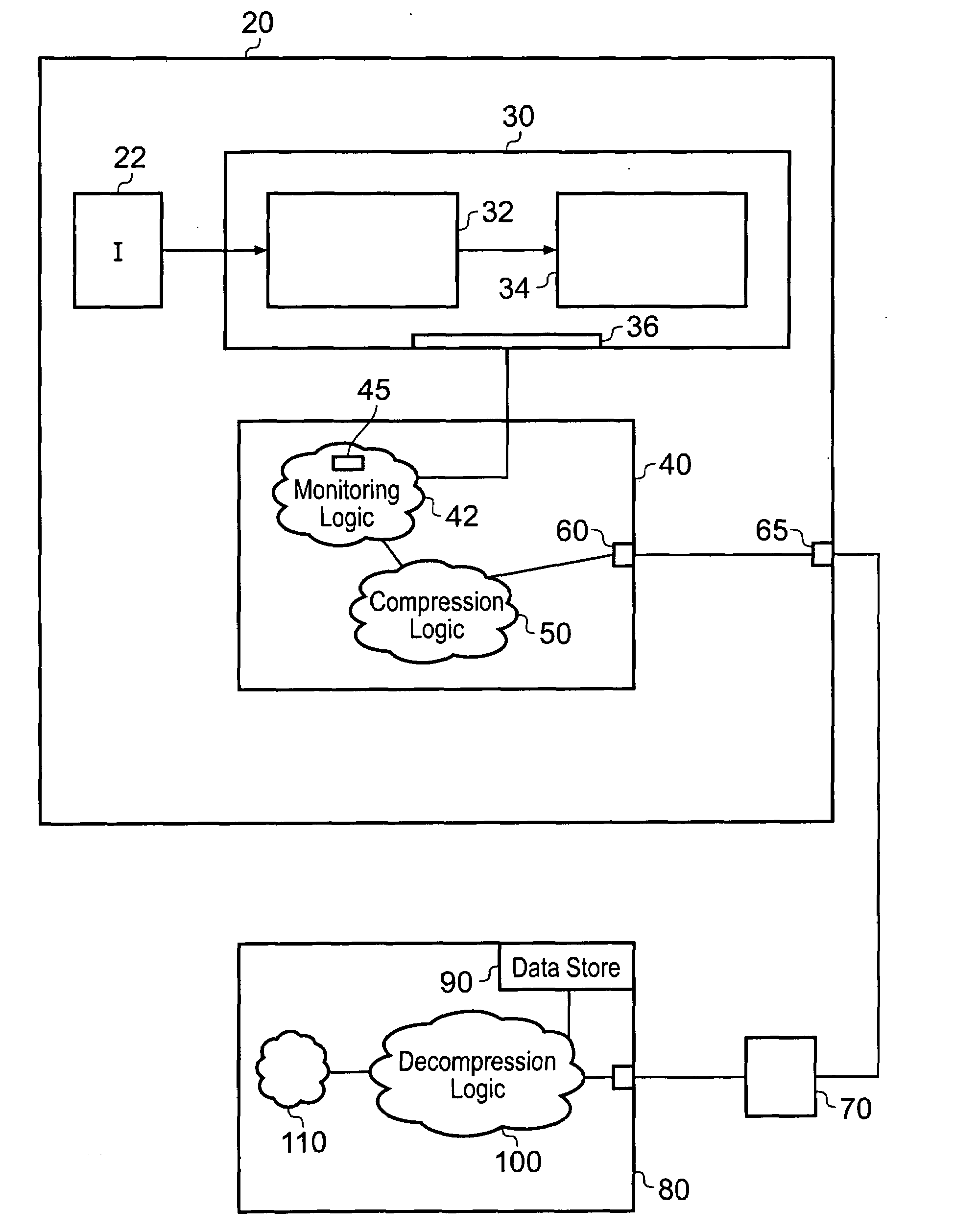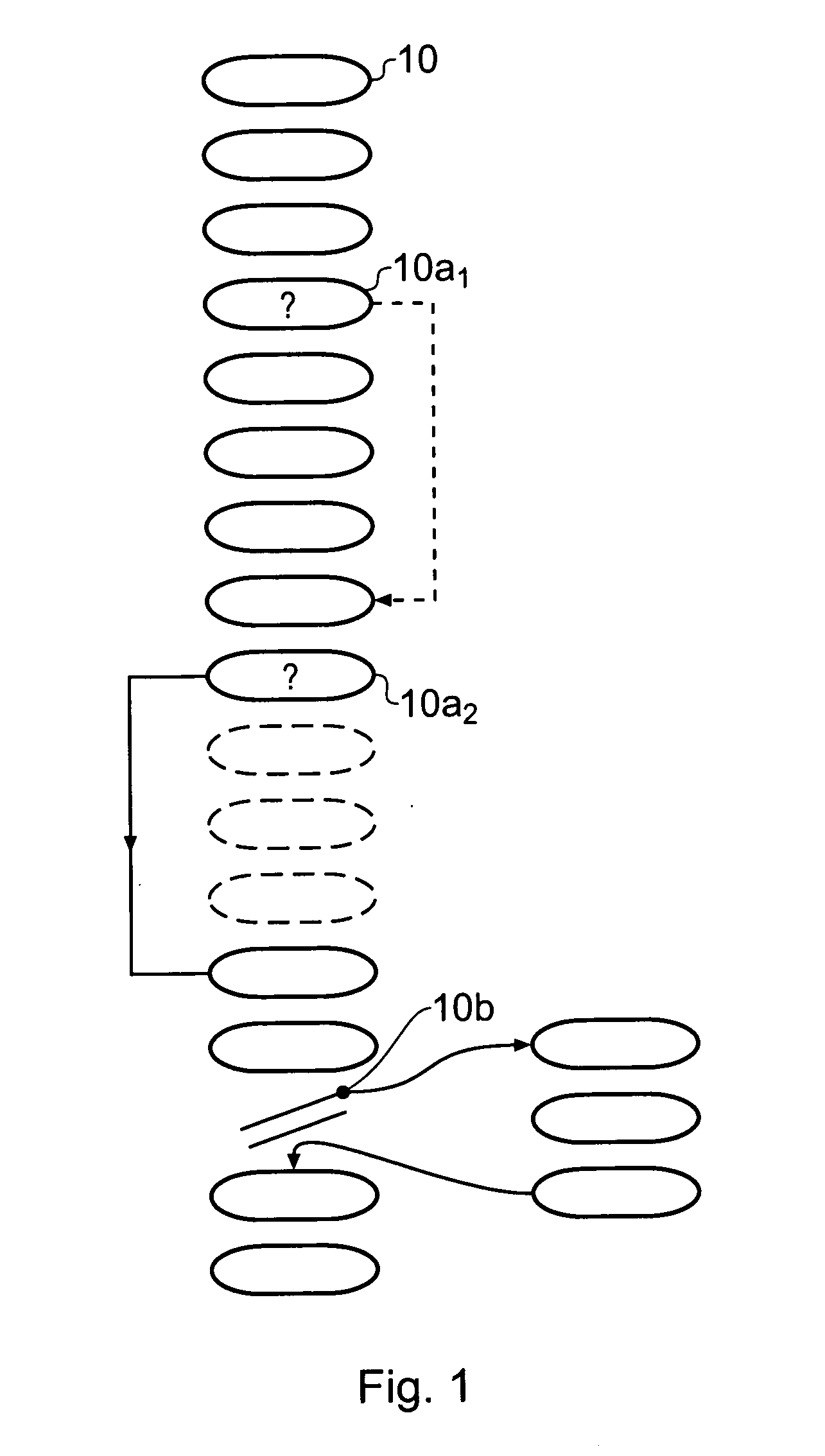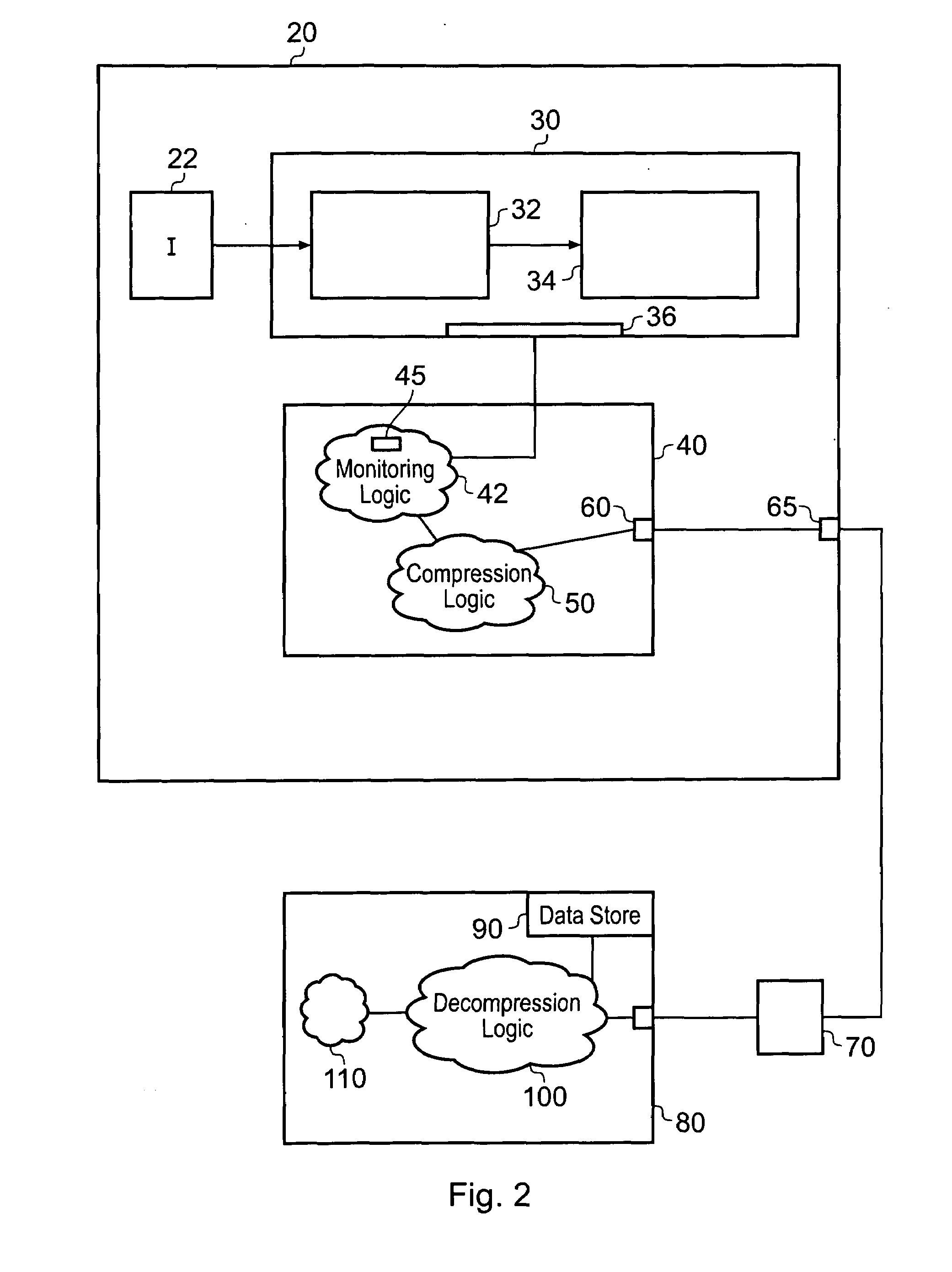Reducing the size of a data stream produced during instruction tracing
a data stream and instruction tracing technology, applied in the field of data processing, can solve the problems of limiting the number of situations where it is useful, increasing the core frequency, and a particular problem, and achieve the effect of less evenly distributed and better compression
- Summary
- Abstract
- Description
- Claims
- Application Information
AI Technical Summary
Benefits of technology
Problems solved by technology
Method used
Image
Examples
Embodiment Construction
[0066]FIG. 1 shows in very simple schematic form a stream of instructions 10 being processed, the instruction stream including conditional branch instructions 10a1 and 10a2 and exception event 10b.
[0067]In this embodiment of the invention, for the instructions shown only marker instructions have information output about them. Thus in this case an N-atom is output for the non-execution of instruction 10a1 and an E-atom is output for the execution of instruction 10a2. An exception indication and a count value indicating the number of instructions to have been executed following the previous marker instruction 10a2 is output in response to exception event 10b.
[0068]FIG. 2 shows a data processing apparatus 20 comprising a CPU 30 operable to process a program comprising an instruction stream sent from an instruction memory 22. The CPU 30 comprises an instruction fetch unit 32, a pipeline 34 and a trace interface 36. The data processing apparatus also comprises an Embedded Trace Macroce...
PUM
 Login to View More
Login to View More Abstract
Description
Claims
Application Information
 Login to View More
Login to View More - R&D
- Intellectual Property
- Life Sciences
- Materials
- Tech Scout
- Unparalleled Data Quality
- Higher Quality Content
- 60% Fewer Hallucinations
Browse by: Latest US Patents, China's latest patents, Technical Efficacy Thesaurus, Application Domain, Technology Topic, Popular Technical Reports.
© 2025 PatSnap. All rights reserved.Legal|Privacy policy|Modern Slavery Act Transparency Statement|Sitemap|About US| Contact US: help@patsnap.com



